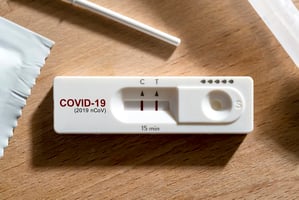Researchers at Laval University in Quebec and colleagues have devised an assessment chart called...
Retinal Nerve Fiber Thickness May Offer Clues to Predict Cognitive Decline
 |
Fang Ko, M.D., of the University College of London Institute of Ophthalmology and colleagues analyzed data from UK Biobank, a large epidemiological study of UK residents aged 40 to 69. As part of this study, between September 2009 and June 2010 67,321 people underwent optical coherence testing (OCT)—a noninvasive imaging tool that can produce 3-D cross-sectional images of the retina. Study participants received cognitive tests, which measured prospective memory, pairs matching, numeric and verbal reasoning, and reaction time, at the start of the study and again during 2012-2013. The researchers focused their analysis on 1,251 people with high-quality OCT scans, who had complete baseline and follow-up cognitive evaluations, reported no neurological or ocular disease, and did not have diabetes.
The researchers found that a thinner baseline RNFL measurement was associated with worse performance on baseline cognitive tests. Moreover, a thinner baseline RNFL was significantly associated with a future decline in a greater number of cognitive tests, even after controlling for potential confounders.
“Our study strengthens the argument of an association between neurodegenerative processes that affect the brain and the eye and indicates that ... measurement of the RNFL is a potential noninvasive, relatively low-cost, and time-efficient screening test for early cognitive changes,” Ko and colleagues wrote.
For related information, see the Psychiatric News article “Dual-Task Gait Testing Identifies MCI Patients Likely to Develop Dementia.”
(Image: iStock/CoffeeAndMilk)






